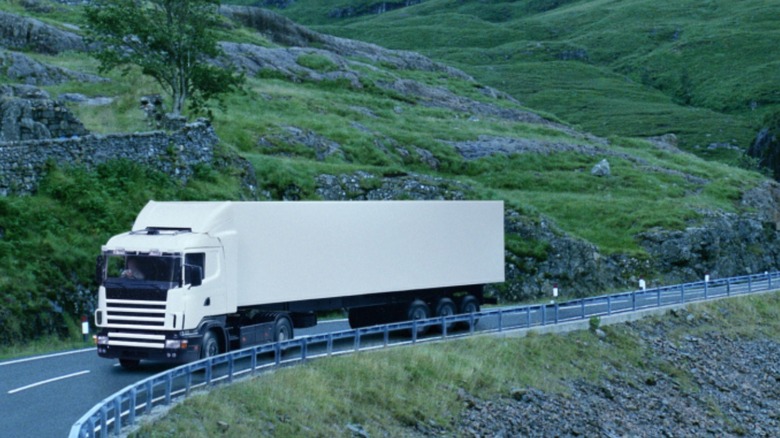Semi-Truck Retarders: How They Work & What They Do
Semi-trucks are designed to carry heavy loads. That's why they're weighed on the road to ensure they do not exceed their limitations. So, when they're driving fast or going downhill, just using the brakes to slow down or stop the truck might not be enough.
This is where the retarder comes in. Instead of being placed at each of the wheels of a truck, like disc or drum brakes, a retarder is located elsewhere along a truck's drivetrain, usually mounted on its gearbox. This system is not meant to replace the brakes; it just supplements them to ensure the brakes do not overheat and lose all effectiveness.
A retarder introduces resistance to the drivetrain, similar to how engine braking reduces or limits your speed by using the car's engine. However, hydraulic retarders instead use oil pressure and two discs (a rotor connected to the truck's gears and a stator) to slow it down.
For example, when the trucker breaks or activates a Voith Retarder, the truck's brake management system would signal the retarder to start feeding oil to the rotor and stator. This increasing pressure would then add resistance to the drive train, thus reducing its velocity.
This is particularly useful when a truck is traveling at highway speeds and needs to gradually slow down, like when it's approaching a city or a toll booth, and could help prevent accidents like jackknifing. Retarders are also often used when a truck is driving downhill for an extended period. This will help the driver reduce the pressure and temperature on the brakes, thus preventing them from overheating and failing.
What are the different types of semi-truck retarders?
There are different types of retarders, especially as technological advancements have allowed for more compact and efficient systems. The retarder we described above is called a hydrodynamic retarder, as it uses oil to reduce a semi-truck's speed. Some manufacturers even build this into the transmission system, thus giving it the name "in"tarder.
A more modern system uses electromagnets instead of oil or hydraulic fluids to induce resistance. This is called an electromagnetic retarder, where an electric current going through the stator creates a magnetic field. This then acts on the rotor, putting resistance on the drive train and slowing down the semi.
Electrodynamic retarders take electromagnetic retarders to the next level. Instead of just releasing the absorbed energy as heat, it converts the vehicle's kinetic energy to electricity through an induction system. This is then stored in a battery which can be used to power other systems in the truck, which is somewhat similar to how a Toyota Prius's hybrid engine works.
Some retarders are installed directly on the engine, and they're called Jake Brakes or Exhaust retarders. The former works by changing the engine's valve timing, which opens the exhaust valve right after the compression stroke. This prevents it from pushing the piston down, thus slowing down the engine (and the truck).
On the other hand, the latter restricts the exhaust gases coming from the engine, thus creating back pressure. This also helps decelerate the engine, in turn reducing the semi's speed.
A retarder is useful for decelerating a truck, but it should be used with purpose. If you activate it while on a slippery road or on bald tires, you risk skidding your truck and losing control. So, it's important to ensure it's turned off when road conditions are not optimal.

